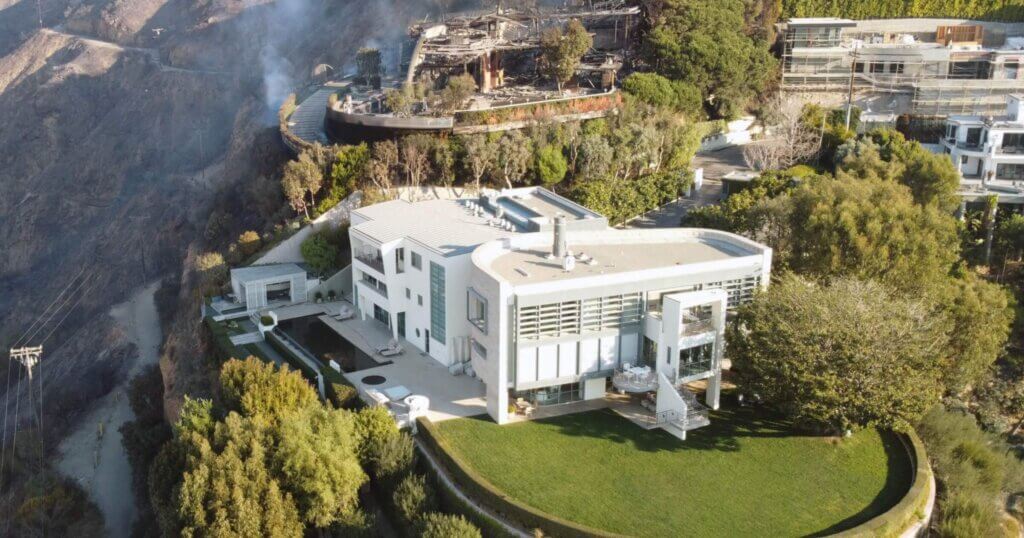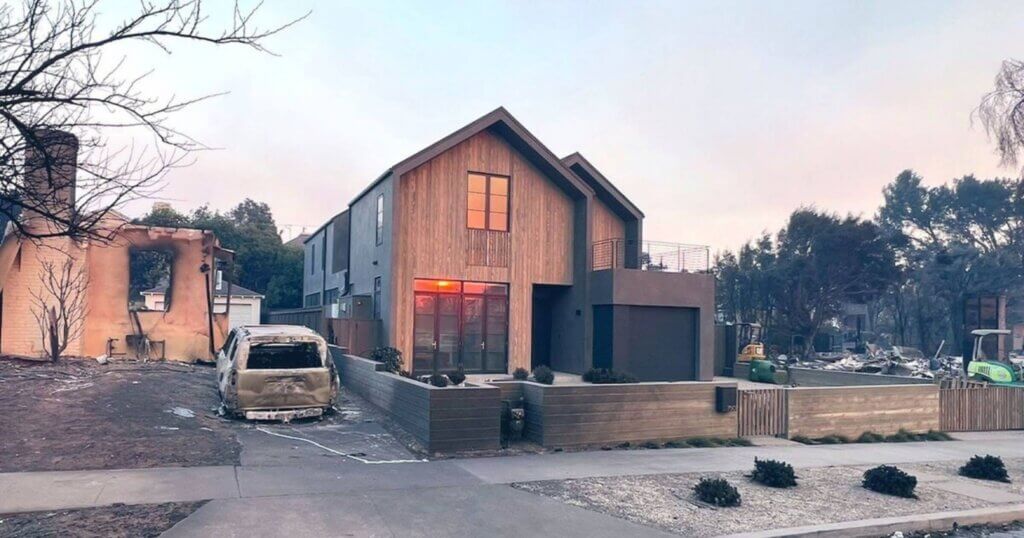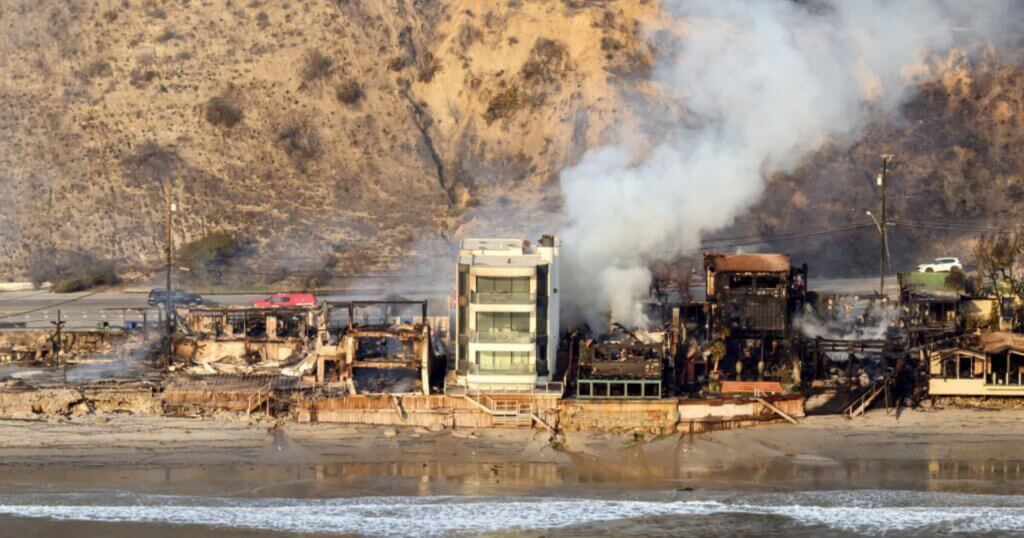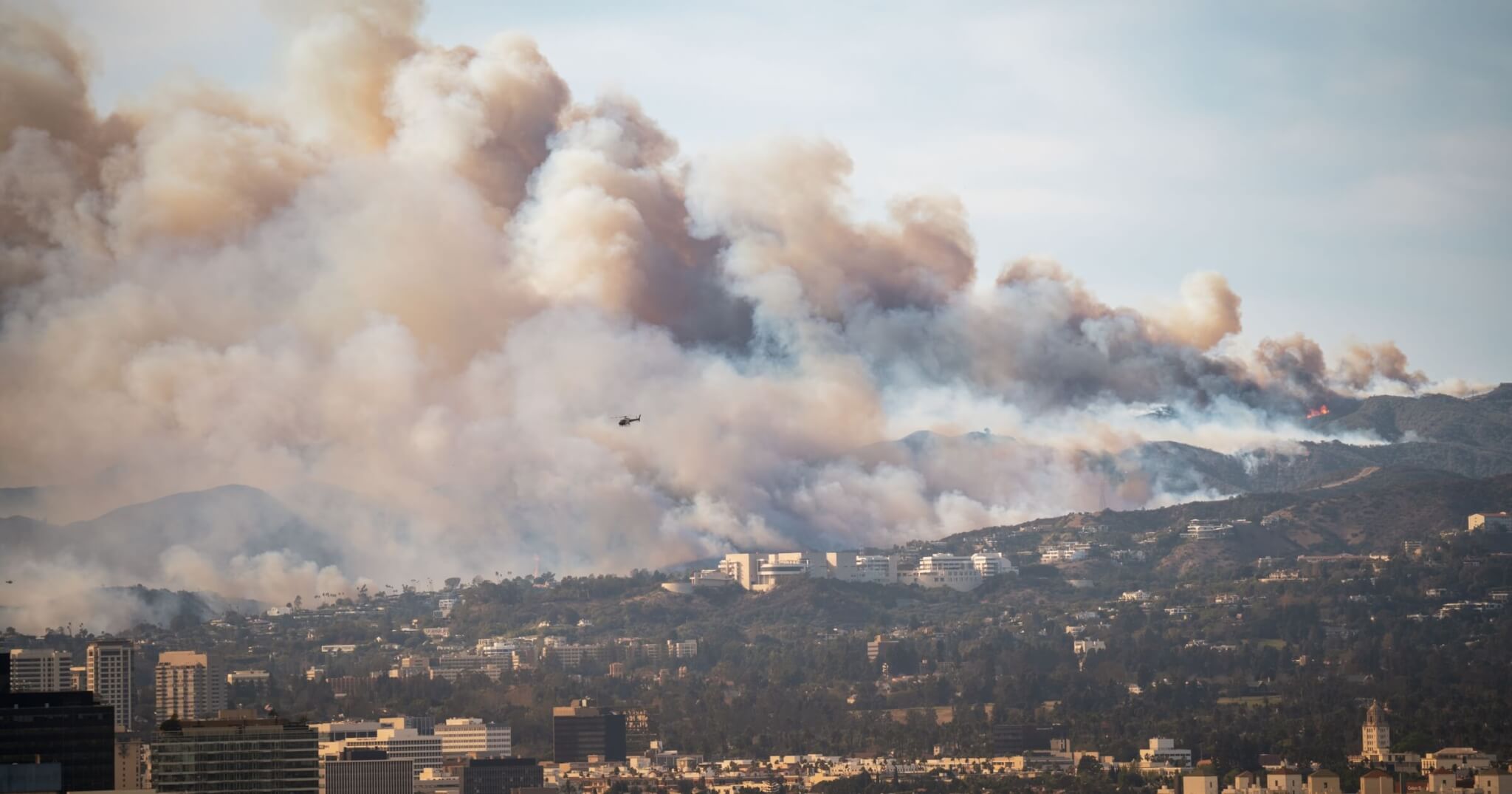Just a few short months ago, a devastating wildfire spread across Los Angeles in the Palisades and the Eaton areas. More than 15,000 homes were destroyed, and roughly 80,000 people were displaced. Amidst all of this devastation, a few homes survived the LA fires providing us lessons to take when building fireproof homes. While the rebuild will be a long road for those affected, the destruction calls into question the fire-resilience of the construction before the fires started.
Why some homes survived the LA fires
In some cases, of course, no amount of home preparation can prevent the destruction of a fire. And when we question why some celebrity homes survive the blaze instead of the average homeowner, the answer often comes down to economic status. Most of the celebrity homes that survived did so because these homes come with a superior build, including stringent safety measures that the average person simply didn’t have access to.
However, class differences aside, the materials and techniques used provide us with insights on how to fireproof homes and find ways to do so in affordable ways. There are ways the average consumer can identify the right materials, invest in appropriate renovations where possible, and ultimately create a safer and fire-resilient home. But first, lets take a look at three homes that survived, and how they made it happen.
1. Tom Hanks’ home

While shopping around for his home in the Palisades, it’s rumoured that Tom Hanks considered wind direction in case a fire should occur. He specifically chose an area close to the edge of the cliff, where the winds were more gentle than further in town.
Hanks also has an automatic sprinkler system installed that activates when the temperature in the area around the house reaches a certain threshold, preventing a fire from spreading. Lastly, the house is made of reinforced concrete, making it structurally fire-resistant.
2. Greg Chasen’s home

Greg Chasen is a Santa Monica architect who has kept fire resilience top of mind when building his property. That meant no vents, fire-rated walls, and minimal landscaping. He even took extra steps to prepare for the fire’s arrival, cleaning leaf litter and trash cans. The gates of his property were even left open, as Chasen knew they could essentially act as candle wicks for the flames.
3. David Steiner’s Malibu home

David Steiner, like Tom Hanks, has a home built of concrete. Steiner also has a fire-resistant roof and double-paned windows with tempered glass. His home was so well protected that firefighters stood on the balconies to better hose down the neighboring residences.
Best practices for building fire-resistant homes
From the homes that survived the LA fires, the key lessons start with choosing the right materials and building smart. Below are some of the best practices to follow to fire-proof your home.
Choose a Class A-rated roof
Class A indicates materials with top-notch fire resistance and could include stone, brick, concrete, and gypsum wallboard. These materials, when used to build a roof, increase safety and lessen the risk of the fire spreading.
While class A roofs are important, using non-combustible materials is also integral to fire protection as they add an extra layer of safety by minimizing the risk of ignition. These materials could include metal roofing, which inherently resists ignition and provides utmost protection by also never contributing to the spread of fire.
Eliminate ember entry points
Embers are a major culprit for home ignitions, particularly in the event of wildfires. Defined as hot, small smoldering fragments of fuel, they can easily travel long distances in the breeze without snuffing out.
Ember entry points could include vents, windows compromised by heat, and cracks in roofs or walls. Once they get inside, they can spark a flame by landing on flammable materials, such as rugs, curtains, or furniture. A common fix is to seal ember entry points with ember-resistant screens and materials that still allow airflow, but prevent the embers from entering the home.
Install fire-rated exterior walls and windows
Fire-rated materials are more commonly used in homes today, including in exterior windows and walls. The perks of choosing a fire-rated material on your home’s exterior include:
- Better fire resistance: Of course, these materials are produced to withstand elevated temperatures for a long duration. This prevents flames from breaching walls and spreading to your home’s interior.
- Increased heat protection: These materials also help insulate the home and reduce the level of heat transferred from a fire. This helps prevent ignition within your home.
- Wildfire-specific protection: Screened vents, fire-resistant siding, and tempered glass windows are integral for protecting your home from the high heat and unpredictable embers of wildfires.
Maintain defensible space
The buffer area created around your home by removing flammable materials and vegetation is referred to as your defensible space. Increasing the fire-resistance of this area can slow or completely stop the spread of a fire to your home. It’s simple. Less fuel means a lower risk of fire spreading to the home.
Build safer decks
When you think deck, you think wood. And it’s hard to imagine how you could possibly increase their fire safety. But there are a few ways you can optimize the build and the design of your outdoor area:
- Choose fire-resistant materials: Metal railings, fire-retardant-treated wood, and composite decking can enhance your deck’s fire resistance.
- Implement fire-resistant design: Cover the underside of timber decking with fire-resistant fiber cement board and add metal flashing around the lower part of your deck. Enclosing your deck with fire-resistant screening will also slow or stop the spread of embers.
- Maintain the defensible space: Make sure you’re keeping your defensible space clear around your deck. Don’t plant anything too close, and don’t keep other flammable garden accessories nearby.
Insulate with fire-resistant materials
Yes, you can get fire-resistant insulation. This helps slow the spread of fires and heat once the flames enter the home. It’s typically made from non-combustible materials like fiberglass or mineral wool. These materials can easily withstand high temperatures and can stand as a barrier between the fire and your home’s interior.
The future of building fire-resilient homes
The future of fire-resilient homes comes down to demand and climate change. If natural disasters and wildfires continue to ravage the Earth more frequently, consumers will increasingly opt for fire-resilient materials and building practices.
Currently, there’s a lack of accessibility to these materials for some, as there are significant financial barriers to upgrading and renovating the home. But as the demand rises for fire-resilient home materials, it will increasingly become a more common practice to design with fire resistance in mind, keeping future home buyers safer from the get-go, especially in drier areas of the world that are particularly prone to wildfires.
By choosing Class A materials, using ember-resistant materials, and maintaining defensible space, we can take gradual steps toward safer materials for all. spa
Make sure to subscribe to our newsletter and follow us on LinkedIn to stay informed about safety advancements in construction.


